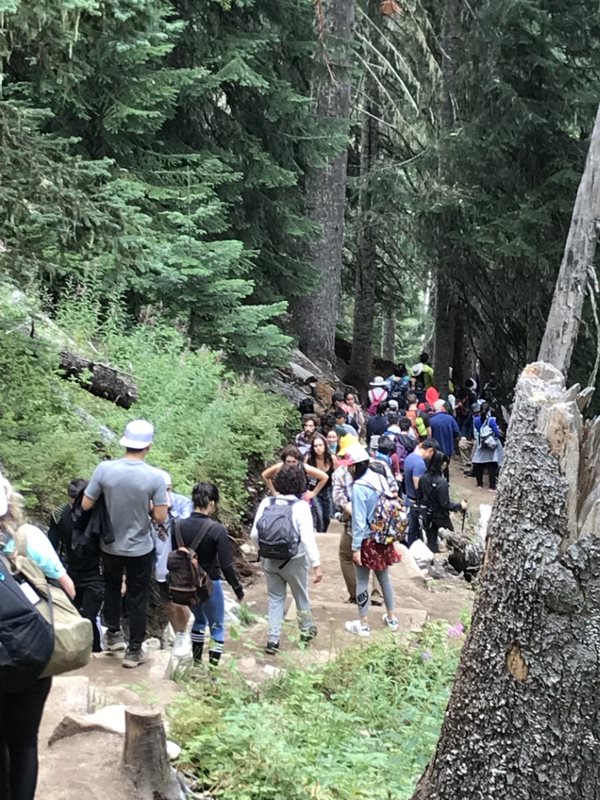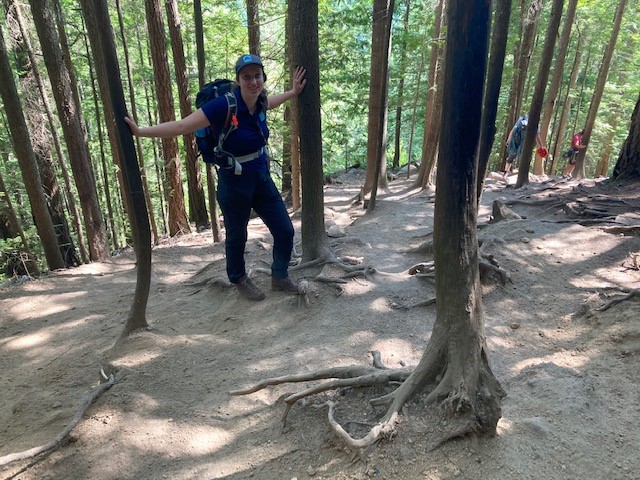The evolution of BC Parks Day-Use Pass Program
Categories:
BC Parks exists to protect our province’s diverse network of incredible natural environments while providing safe and sustainable outdoor recreation.
BC Parks hosts a lot of people – millions, each year.
Visitation to parks is increasing significantly, specifically in popular parks close to urban areas. While this is encouraging, the increase in visitors has challenged our mission to balance safe outdoor recreation with the preservation of our parks’ cultural and natural features that local wildlife call home.
This high visitation is overwhelming our park services and infrastructure in many popular parks. And, because the expansion and construction of new facilities takes time, consultation, and careful consideration, increased demand is leading to crowding across the province. This leads to less desirable visitor experiences and continued impact on the natural and cultural features that parks are put in place to protect.
We face the complex challenge of striking an appropriate balance among the interests of public recreation and protecting the environment as the public’s desire to spend time in parks increases. BC Parks is committed to reconciliation with Indigenous peoples, and this is a fundamental principle for planning around public recreation and visitor management in protected areas.




The Day-Use Pass Program’s introduction and role
Visitor Use Management is a proactive way of managing the impact of visitor activities in parks. It involves several potential strategies such as changing the way people interact with parks, increasing the park’s ability to handle use, and sometimes limiting use. Specific management actions include education campaigns, enforcement of prohibited behaviour such as littering, modifying trail infrastructure and design to keep visitors from trampling vegetation, and requiring visitor passes for entering parks.
Over the last few years, BC Parks has been exploring visitor use management as a tool to improve recreational and ecological conditions at parks. First, in 2018 and in collaboration with Lil’wat Nation and N’Quatqua, BC Parks initiated the development of a visitor use management strategy at Joffre Lakes Park to combat extreme crowding and overuse.
Then, in 2020, the Day-Use Pass Pilot Program was launched as part of BC Parks’ response to managing risks and physical distancing requirements associated with Covid-19. In 2021, the Joffre Lakes Park Visitor Use Management Strategy was completed, formalizing the use of the day-use pass at Joffre Lakes Park. At other day-use pass parks, it had become evident that the day-use pass, while initially used to reduce Covid-19 risks, was an effective way to improve the visitor experience by reducing crowding on trails, vehicle lineups, and parking lot overflows. Since then, the program has continued seasonally at parks where it assists our agency in maintaining British Columbia’s natural environments.
We’re constantly adjusting and improving
Since the launch of the Day-Use Pass Program, our approach has consistently been directed by public feedback, staff consultation, and research. With 2020 acting as a baseline, we targeted improvement opportunities wherever possible in 2021 and 2022.
In summer 2021, we teamed up with the BC Parks Foundation with an aim to provide increased education through the introduction of to facilitate the program in each participating park. We didn’t just focus on the in–park experience, though; we also wanted to make sure the booking experience was seamless and fit your needs. Based on your feedback, we extended the booking window and started it later in the morning.
In winter 2021, we expanded the program to Mount Seymour Park, which annually hosts over 600,000 people between December and March. The introduction of pass requirements for day-use visitors reduced congestion and increased parking predictability. In light of the increased planning required to book a day-use pass, we also wanted to acknowledge that plans change. With that in mind, we introduced a cancellation feature that returns your pass back into the pool for others to reserve.
Ultimately, since the program’s initial launch, we have committed to adjusting, improving, and evaluating how well the program helps BC Parks support our key goals:
- decreasing congestion, crowding, and traffic concerns;
- improving visitor safety;
- increasing the number of informed and prepared hikers;
- protecting cultural and ecological values; and
- allowing BC Parks staff to focus more time on visitor education and protection of park values.
In line with that commitment, we removed the Stawamus Chief Park from the program this summer. Despite its continued high use, the park’s proximity to emergency services, hardened trail surfaces, and variety of parking options meant that there were fewer emergency access concerns, less vegetation trampling, and adequate parking availability.
The decision to remove Stawamus Chief Park from the day-use pass program was made after careful consideration and the review of both data and qualitative feedback. We are and will continue to be committed to reviewing feedback and further improving this program.
Help us continue to make this program better
We want to hear from you. Your feedback will be used to inform how we improve Visitor Use Management and the Day-Use Pass Program at BC Parks moving forward.




